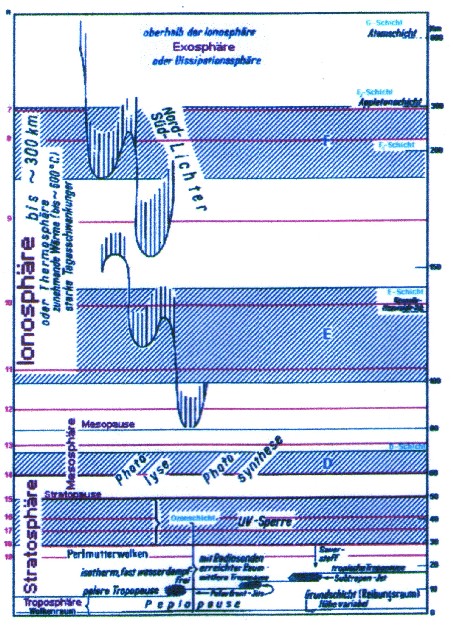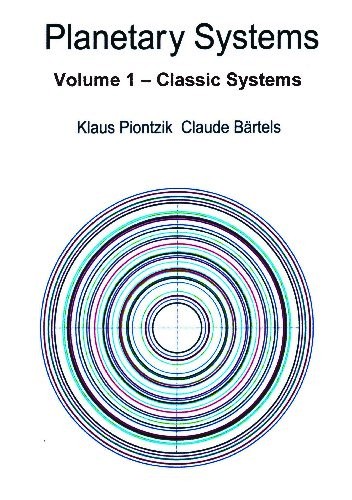| Copyright © Klaus Piontzik | ||
| German Version |
| According to chapter 3.7 Sat 3.7.7 the following applies:
Layers of the atmosphere <==> Earth's vibration structure The Ozone-, D-, E- und F-layer form the more electrically conductive layers of the atmosphere. This can be explained if one assumes: |
| Earth's magnetic field <==> Earth's vibration structure |

|
Layers =
accumulations of maximum vibration states ==> Energy supply The following phenomena can occur in the stratifications 1) Induction 2) Lorentz force 3) Ionization Consequence: Increased ionization of the matter involved occurs and this leads to the formation of electrical equipotential layers. |
| Illustration 5.3.1 – layers |
| The formation of the atmospheric layers can be interpreted as a resonance phenomenon through increased ionization of the matter involved with the magnetic layers. |
| 5.3.1 - Theorem: | The magnetic layers form the basis for the conductivity of the ozone, D, E and F layers. |
| 5.3.2 - Conclusion: | The magnetic oscillation structure is the engine of the electric field. |
|
Therefore, the equipotential layers of the Earth's electric field are constantly recharged
by the Earth's magnetic field. And it is this connection that makes the earth's electric field stable.
If voltages arise between the equipotential layers due to various charges, discharges in the form of lightning can occur. The model shows that voltage build-up and discharge are possible in both directions, i.e. downwards and upwards. While lightning strikes are a generally observable phenomenon, upward lightning bolts, so-called sprites, were previously unknown. Only a few years ago it was possible to detect such sprites. The present model provides a completely natural explanation: voltage build-up and discharges are possible both upwards and downwards. Due to the connections between the atmosphere and weather events, the earth's magnetic field has two effects on the climate: |
| 1) | through the formation of the more electrically conductive layers and the electric field |
| 2) | through direct influence (Lorentz force) on water and air mass transport |
| Regarding 2) Locally these may be very small forces, but since they are effective everywhere on earth, they should have some influence on the global air/cloud/water flows. The connection between the earth's magnetic field and climate has not yet been taken into account in any of the existing climate and weather models. |
| 5.3.3 - Conclusion: | The magnetic oscillation structure is the engine of the earth's climate. |
| At this point it should be considered what influence
a change in the earth's magnetic field would have on the atmosphere and its processes.
There is a probability that the climate change in recent years is partly induced by the changing magnetic field.. According to the model: |
| 5.3.4 - Conclusion: | Change in the earth's magnetic field <==> Change in the earth's climate |
| The consequence is that humans and their emissions
have an accelerating effect on climate change, but are NOT the cause of climate change,
but rather the changing earth's magnetic field.
The Earth's changing magnetic field induces climate change. |

|
200 sides, 23 of them in color 154 pictures 38 tables Production und Publishing: ISBN 978-3-7357-3854-7 Price: 25 Euro |